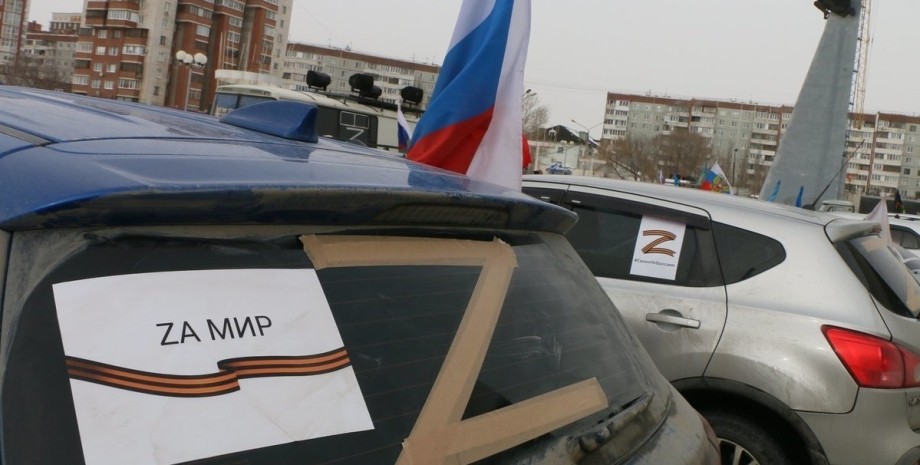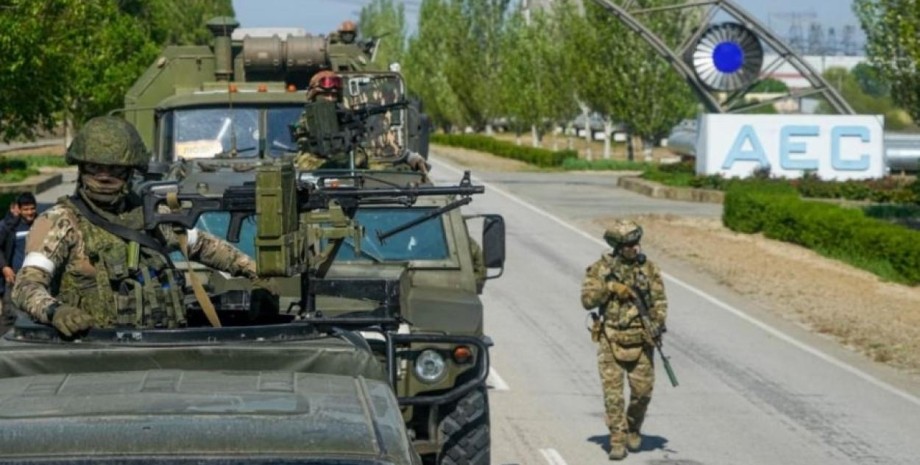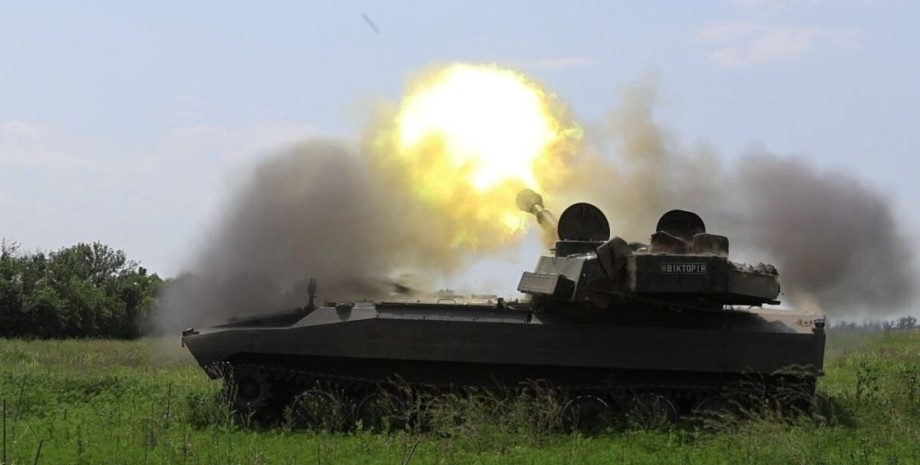
Who he is: Chairman of the Board of Savings Bank why he is: an experienced banker who has been working in the banking sector for over 25 years, has a MBA (Kassel International Management School, Germany), experience in Pricewaterhouscoopers. During his career, he headed banks such as UkrSibbank, Pravex Bank, Piraeus Bank. Since November 2020 - Chairman of the Board of the State Savings Bank.
Russia's invasion of Ukraine on February 24, 2022 - what happened that day in your office and Savings Bank in general? What were the first conversations, decisions? That morning I woke up from the explosions two kilometers from the house, soon the family went to the basement, and I went to work in the head office of the bank. I must say that we were preparing for such a scenario in the Savings.
Of course, we did not have specific information about the offensive, on all sides there was: "There will be no offensive, no one will go to Kiev either. " But we still began to actively prepare for the invasion at the end of 2021. Even earlier, uninterrupted plans were developed, as required by the NBU. Subsequently, we updated these plans and began to export to safe places and important documents from potential combat cities.
It was understood that the attack on Kiev could also be, and therefore developed an evacuation plan for key workers, as well as moving some equipment to backup locations. Of course, on February 24 we had meetings, they concerned the uninterrupted work of the bank and even the management of assets and liabilities. Then the NBU immediately began to introduce limits to reduce the degree of panic, and people actively withdrew money. We had an important task - to provide all cash offices.
We have developed safe routes and were actively implementing them on February 24. Everyone in Savings Bank understood their responsibilities. There was no break in the bank management, we transferred its activities to military rails very promptly. Although, of course, for all of us the invasion of Russia was a shock, and the emotional situation is not very. The events developed very quickly, and certain regions were at the epicenter of hostilities.
What happened there? By February 24, we have removed values from these regions, leaving only the operational cash. At the same time there was a task - to stay present in these regions. In the Kherson region, the branches worked until the last: we made the decision to close the branch only when the invaders appeared on its doorstep. It was in Kherson that the branches worked for some time when Russian troops were already there.
Many work has been carried out to evacuate employees from dangerous regions. In Kiev, many workers left panic, some branches did not work for a while. Where the opportunity was, we transferred staff from other departments. From Kiev, we organized evacuation of workers when the situation was very dangerous at some point due to large -scale missile attacks. Some employees were leaving themselves, our colleagues from the Security Department were developing ways to reach the western regions.
The evacuation wagons of Ukrzaliznytsia helped. The most important thing was to ensure proper management of the bank. It was not easy in those days, but we coped. In the first months of the war, for many companies and banks, the issue of staff - both the maintenance of personnel and the physical protection of those who found themselves in the fighting areas.
How did you react to Savings Bank? Did many personnel loss survived the bank for 2022? Migration in general affected the work of the background and branches? Many of our employees went abroad, but many have returned. Especially after the CMU resolution that employees of state -owned enterprises should be in Ukraine, otherwise we can release them. Some of the employees eventually fired at their own request. In total, the number of staff decreased by 5 thousand during the past year.
For various reasons, including through migration. But there are other reasons, such as centralization of functions and improving the efficiency of all processes. We started these projects in 2021 and continue to implement them despite the war.
How many branches of the bank were affected as a result of aggression as of mid -February 2023, and how much do you estimate the loss of the bank, in particular through the occupation of part of the Ukrainian territories? We have 164 damaged compartments according to available information. There are 19 branches in Donetsk region, no branch is working in Lugansk. However, we immediately restore the work of branches in the de -industrial area.
There are three branches in Kherson, a branch in Izium, a large Burluki, has been opened in Kharkiv region. Of course, the Savings returned to Bucha, Irpen, to the Makariv district. As for the losses, we are currently audit to fully calculate the losses caused by the aggression of the Savings Bank. We have two categories of losses - direct (about 360 million UAH) due to destruction and damage, as well as indirect. The total losses are currently estimated by billions of hryvnias.
Work on the loss of losses is ongoing. But this amount also includes reserves that were formed under loans issued to the red zone (near the front line and in the temporarily occupied territory). By the way, the loans, which are located in the occupied territories, we have already reserved 100%. In total, we have 12 billion UAH of reserves for the year.
Plus, the administrative expenses of the bank, which apply to staff, through the provision of financial assistance and raising salaries at the beginning of aggression, as well as energy security. We also take into account the undertaken profit. Will you be submitted to international courts (or already submitted) for Russia because of these losses? Already submitted.
We now have a successful case on Crimea - on December 7, 2022, the Cassation Court of France has completed the cassation complaint of Oschadbank and supported the position of the Ukrainian financial institution in a dispute against the Russian Federation regarding the compensation of losses caused by annexation of Ukrainian Crimea.
That is, the Court of Cassation left the decision of the Arbitration Court of Paris of November 26, 2018, according to which Russia is obliged to compensate for the damages of the Savings Bank as a result of annexation. The case was considered for more than six years. Now the amount payable according to the arbitration decision, given interest, is $ 1. 5 billion. We are working on how to use this judgment to find the assets of the Russians, seize and thus reimburse the bank damage.
Hard and careful work was carried out, which has a good result - a court decision in favor of Oschad. We are working on how to use this judgment to find the assets of the Russians, seize and compensate the bank damage we have also first filed a lawsuit against the ECtHR on losses during a full -scale war and we will work to reimburse all our losses. We have taken this active, we have advisers, we have a plan of work. I think we have good prospects to compensate for Russia.
A special commission has been created now, we collect data on losses, cooperate with the Ministry of Justice, and plan appropriate measures. It is not yet known whether it will be the only claim from Ukraine, or from state -owned banks, or separately from the Savings Bank. I think many companies and banks will sue Russia because of huge losses caused by aggression. We need to "run", quickly collect all the data to prepare for a difficult legal fight against the aggressor.
The lending in the first months after a full -scale invasion was suspended by all banks. Savings Bank When returned to the business lending market? We did not stop lending, limits for businesses and individuals did not cancel. Savings Bank continued to make it possible to use loans. And if the company was already under fire, did it also receive credit? Yes, it received within the existing credit limits.
We could not say that we were closing the credit line because the capacity of the enterprise is in the war zone or to ask the company to repaid the loan faster. If done, the company will lose the opportunity to pay for employees, counterparties and continue their activities. Of course, we had and remains the distribution of the areas where the business is located - red and green. We have carried out and monitor business situations, how they feel, whether restructuring is needed.
Yes, we considered new limits more slowly, but at the end of March we actively funded agricultural enterprises. It was a question of food security, providing a sowing campaign. Savings Bank issued agro-enterprises 5 billion UAH during the sowing period, during April-May, and then began to connect to various important projects for the country, to issue loans for the purchase of fuel, energy equipment, to finance the work of critical infrastructure enterprises.
We have increased the portfolio in the small and medium -sized business segment by almost 90%last year. In fact, we did what banks usually do not. Many private, banks, if something similar happens in the country, behave as ostriches - head in the sand. Immediately "we do nothing, we see. " But Oschadbank continued to lend, and so the businesses, when we saw that we were continuing to issue loans, they better served their debt. I think this is precisely because we did not pause in business financing.
Of course, credit holidays were introduced, as recommended by the NBU, and this has also worked for improving payment discipline - we now have a high level of interest on business loans. When it comes to business lending, it is usually about state programs "5-7-9%" and others.
Do the bank now have programs for those businesses that, for example, do not meet the criteria of the state credit program? Yes, the state program makes it possible to receive funds at lower market interest rates, but not all companies meet its criteria. Savings also issue loans outside the state programs, that is, on market conditions. This is how we finance large corporate clients. Certain agricultural enterprises are partly under the conditions of the program, and partly not.
However, of course, small and medium-sized businesses are more interesting to get a loan within the state program: we have increased the MMSB loans (micro, small and medium-sized businesses) thanks to government programs. By the way, Savings Bank rebuilt all the appropriate processes - simplified the procedure for issuing loans. It also affected the dynamics of our portfolio. As I noted earlier, during the year the IAS loans have increased by 90% to UAH 17. 5 billion.
To mention, a few years ago, the SME loans portfolio amounted to UAH 5 billion, seven years ago - only UAH 2 billion. Planned tasks for 2023-increase the loan portfolio to 21 billion. In January-February, about 350 loans worth 1 billion UAH were issued. In your opinion, what industries are most needed by bank funding now? What sectors of the economy are most often loans? All industries that relate to citizens' life support require funding.
It is the food industry, agricultural production, trading, product safety, logistics projects. Our power system is now suffering from destruction through rocket firing, and we are considering financing the projects of restoration of critical infrastructure. We have strategic directions that have been approved by the CMU for all state banks. It is also transport, agriculture, companies affected by hostilities. We have developed a strategy of wartime and will implement it.
Business in Ukraine consider it bold? Is he ready to get development loans now to grow, develop new projects, invest in the future? There is a demand for loans. Yes, he is not the one who was before the war, but companies are turning, and for investment loans as well. State lending programs help businesses in particular investment issues. During 2022, the IAS loans increased by 90% to UAH 17. 5 billion. Planned tasks for 2023-increase the loan portfolio to 21 billion.
For example, we have a program of credit guarantees from the export-credit agency. Savings have already issued 15 credits for these guarantees. Therefore, borrowers need a smaller pledge, because now it is very difficult for 100% to cover the loan amount by businesses. We work with international organizations. The European Investment Bank has increased the limits of Oschad. We now have an additional limit of 25 million euros to finance MMSB using a guarantee.
The EIB guarantees 70% of the loan, and 30% should be secured by the client (pledge). This simplifies obtaining a loan. Companies are ready to take out development loans, because our business is really bold. Oschadbank is an exclusive bank partner of the EBorot program, in which the government has already provided 1. 5 billion UAH of grant care of business. It is not necessary to return grants subject to the requirements for job creation, and business is now ready to create them.
We help entrepreneurs to buy generators, regional military administrations are involved in this in conjunction with us. Oschadbank has memoranda with Transcarpathian, Chernivtsi and Lviv Ova, in which the latter compensate for or plan to compensate for the first contribution or part of a percent of the business that we receive. Now we are not talking about a shortage of applications from entrepreneurs. On the contrary, we see companies' interest in financing.
In the National Bank it is said - the amount of non -working loans from banks has increased to UAH 432 billion. There they advise banks to use a balanced approach to credit risk assessment. Banks should also carry out flexible restructuring for borrowers. What is your impression of a situation with non -working loans and how does Oschadbank approach this rather problematic question? Savings have a good loan portfolio, that is, our clients are quite disciplined. For example, as for MMSB, we have 11.
6% of a non -serviced loan portfolio. In the red zone, this figure is higher, in safe regions - lower. During the last three months of last year and one month of the new year, it was possible to reduce the percentage of non -working loans somewhat: we have agreed with debtors on restructuring so that they could enter the repayment schedule. We are constantly working with those who are in temporarily occupied territories.
We have a lot of non -working loans that have been formed from the previous crises to a full -scale war. Yes, NPL growth is due to war, but it is not yet uncritical. As I noted earlier, the total amount of reserves formed is UAH 12 billion. A larger share is formed by old non -working loans, where restructuring was and service was suspended as a result of a full -scale war. Has the credit risk assessment changed lately? Yes, it has changed.
Other risks have now emerged, because there is a war and we can in no way reduce its potential impact. At the same time we also understand that the business wants to work. We try to compensate for military risks at the expense of state and international programs and guarantees. Now the savings are more flexible, its risk-management has adapted after shock therapy of February-March 2022, but the control has not deteriorated.
The economy must develop, and we try to analyze each enterprise so as to continue lending, not put it on a pause because of the overall high risks. Is there expectations that after the war NPL will begin to shrink, including thanks to the expected assistance from partner countries, from investment for post-war recovery? There is a feeling that it will happen. There will be more money in the economy, there will be a lot of work.
Investments and international funds will give impetus to development in all sectors. In my opinion, those clients we now finance will be restored. If an enterprise in the temporarily occupied territory continues to work and they have working capital, does it return the loan, or what happens to its debts? There are times when the company continues to pay although it is in occupation. There are cases where the company is completely destroyed and we reserve such loans by 100%.
We study each case to understand if they can pay their debt. If there are no options at all - the enterprise is destroyed physically and the funds for the loan are unable to return - then we consider the opportunity to fix the losses and to expect for reparations from the Russian Federation, which will cover our losses from non -return of this loan. In order to prevent the destruction of business, we try to revive it, we have the appropriate program.
Fourteen businesses have already been relocated to safe regions. Non -working loans eventually affect the financial result due to reserves. We see that Oschadbank for 2022 received a profit of UAH 690 million.
Це менше, ніж у мирному 2021 році, — якими були головні причини скорочення прибутку і якими були ключові можливості заробити прибуток взагалі у складних умовах 2022 року? Звичайно, отримати прибуток ми змогли завдяки тому, що продовжували кредитувати і відповідно нарощували портфель.
Це сприяло збільшенню процентного доходу. Протягом минулого року він зріс на 1,1 млрд грн. Комісійний дохід трішки знизився, але теж був непоганим, та компенсувався торговельним доходом з валютою. У цілому дохід Ощадбанку був вищим ніж у 2021 році, проте витрати теж зросли.
Важливо, що ми були та є операційно прибутковими. Також позитивний вплив на чистий прибуток мали індексні ОВДП у капіталі Ощаду: це такий своєрідний хедж на випадок кризи та девальвації гривні.
В 2015 році банк був капіталізований цінними паперами, вартість яких, в том числі, була прив’язана до курсу валют. Якщо девальвація, то капітал хеджирується переоцінкою індексних ОВДП. До речі, попередньо в січні 2023 року Ощад має чистий прибуток понад 2,2 млрд грн.
Прибутковість все ж важлива для збереження капіталу в умовах війни. Яка ситуація зараз із капіталом? Коли може знадобитися докапіталізація банку? Сьогодні це не потрібно.
Ощадбанк є прибутковим, і все резервування компенсовано частково операційним прибутком, частково індексацією. Але прибуток має бути підтверджений незалежним аудитом, який зараз якраз триває.
Ощад здатний без вливання капіталу утримувати його адекватність на достатньому рівні – вищому за вимоги НБУ. Зараз маємо 15% адекватності регулятивного капіталу станом на 1 лютого 2023 року, а за нормативами потрібно мати не менше 10%. Це добрий запас міцності.
Банк також залишається ліквідним. Які кредити для фізичних осіб зараз в пріоритеті? Чи буде Ощадбанк розвивати автокредитування та іпотеку? На даний момент у пріоритеті іпотека та автокредитування: ці сегменти ми будемо розвивати.
Щодо іпотеки, наприклад, акцент робимо на державній іпотечній програмі. Програму "єОселя" спрямовано на певне коло споживачів, і обмежень там багато. Сподіваюсь, що її умови будуть змінюватись, і видач у 2023 році буде більше.
Автокредити Ощад надає в межах ринкової програми, ми активно співпрацюємо з партнерами. Кеш-кредитування теж розвивається. Попит на кредити для фізосіб порівняно з довоєнним періодом суттєво впав.
Ощад видав 1 млрд грн автокредитів минулого року, а у 2021 році було 1,89 млрд грн. Водночас за "єОселею" зі старту програми видано 670 млн грн, а це 73% усього обсягу виданих банками-партнерами кредитів.
Наша мета — залишаться лідером в цих сегментах, зважаючи на досягнення в 2022 році за часткою на ринку (автокредити та іпотека – більше 50%), тому і в поточному році плануємо тримати такі темпи.
Як змінилося іпотечне кредитування в регіональному розрізі? Попит на іпотеку – в умовно безпечних регіонах. Значна частина позик видається у західних регіонах та в столиці. Люди розуміють, що купувати житло в місті поруч з лінією фронту недоцільно.
У червоній зоні ми й самі надавати іпотечні кредити не будемо. У Києві, Львові, інших містах у західних областях Ощад стабільно надає позики на придбання житлової нерухомості. У Ощадбанку 425 відділень у мережі Power Banking.
Які ваші враження від спільної системи з іншими банками? Це крута ідея, коли клієнт будь-якого банку може скористатись базовими сервісами у відділенні іншого банку. Наприклад, отримати готівку в рамках єдиних лімітів для всіх банків.
Спільно з іншими фінустоновами за ініціативи НБУ ми створили мережу Power Banking, яка працюватиме навіть за умови повного блекауту. Під час перебоїв зі світлом може бути життєво важливо зняти кошти чи здійснити переказ. Для цього і призначено спільну банківську мережу.
Яким став вплив блекаутів на роботу банку, що довелось змінювати, скільки інвестувати в обладнання, як змінювати графік роботи, як долали усі негаразди, з цим пов’язані? Вплив блекаутів на Ощадбанк був, але не критичний, тому що безперебійно працюють електронні канали банківського сервісу.
Але ми почали процес закупівлі генераторів, готуючись до можливих перебоїв з електропостачанням ще до того, як НБУ запропонував створити мережу Power Banking. Певний вплив блекаути мали на комісійний дохід, адже тоді деякі відділення не працювали.
Відсутність живлення більше вплинула на бізнеси, які не змогли через це працювати и їх фінансовий стан погіршився.
А як щодо технологічних збоїв, які можуть відбуватися через відсутність електроенергії? Ощад має резервні канали живлення всіх критичних систем: коли один канал не працює, застосовується інший.
Є потужні генератори, жодного разу під час блекаутів у нас не було перебоїв в операційних системах. В 2022 році ми взагалі не мали жодних проблем у роботі ІТ систем. Це, певно, один із найбільш стабільних років у цьому компоненті.
15 лютого минулого року і Ощад, і інші банки та держустанови зіткнулися з потужною хакерською атакою, але за дуже короткий час змогли її відбити. Після цього захист було суттєво посилено. Облікова ставка – 25%. Проте депозити у великих банках – 7-11% річних.
І ось НБУ оголосив про посилення вимог до резервування коштів на поточних рахунках і рахунках "до вимоги".
Чи відчуваєте вже вплив рішення НБУ? Яким чином, за вашими спостереженнями, реагує ринок на посилення вимог регулятора? Чи будуть зростати депозитні ставки? Ринок зреагував на нову ставку ще влітку минулого року. Але не весь, оскільки банки мають дуже багато ліквідності.
Зараз після підвищення вимог до резервування ми відчуємо зростання відсоткових ставок за депозитами. Чого прагне Нацбанк? Трансмісії, щоб упоратись з інфляційним тиском – це перше. Друге: структура портфеля пасивів у банках має бути більш диверсифікованою.
Тобто обсяг строкових депозитів має перевищувати обсяг коштів на поточних рахунках. Тому регулятор збільшив резервування за поточними рахунками. Банкам тепер потрібно заохочувати клієнтів до розміщення коштів на строкових депозитах.
Проте не всі клієнти до цього готові, адже хочуть мати постійний доступ до коштів. Отже, завдання банків – зробити такий депозит, щоб клієнтам стало цікаво розміщувати кошти на певний термін. Ставки мають бути привабливими.
Потрібна адекватна крива за строками депозитів, щоб не було такого, що ті, хто раніше постійно розміщували кошти на три місяці, зараз перейшли на один місяць і це може вплинути на розриви у ліквідності. Наскільки зростуть відсотки – залежить від банку.
Якщо НБУ і надалі посилить вимоги, то ставки активніше зростатимуть, але й кредити стануть дорожчими. Проте чи будуть ставки по депозитах 20-25%, я не впевнений. Банкам тепер потрібно заохочувати клієнтів до розміщення коштів на строкових депозитах.
Ставки мають бути привабливими. Ще одна проблема, за думкою НБУ, валюта на рахунках, за якою Нацбанк теж посилив вимоги із резервування. Як бути з валютою? Підвищувати ставки за вкладами з 0,01% до 3-4%? Обсяг іноземної валюти на рахунках скорочується.
НБУ послідовно проводить політику дедоларизації. Банкам не вигідно мати багато валюти на поточних рахунках, резервування відбувається в гривні на кореспондентських рахунках в НБУ, що блокує вільну ліквідність для вкладення у доходні активи.
Можливо, банки підвищать ставки за короткостроковими вкладами в іноземній валюті. Але лише тоді, коли є куди вкладати цю валюту на короткостроковий термін. Як правило, такий надлишок валюти розміщується на рахунках в іноземних банках.
Банки будуть рахувати, де їм вигідніше вкладати валюту клієнтів – або надавати кредити, або розміщувати на коррахунках в іноземних банках, від цього буде залежати рівень відсоткової ставки.
Стосовно кредитування, зараз не дуже багато підприємств, які можуть отримувати кредит в іноземній валюті. Для такого кредиту потрібна валютна виручка. До війни експортно орієнтованих компаній серед позичальників було більше, а зараз їх кількість зменшилась.
Тому основний актив — тримати на коррахунках і отримувати відсоток на залишок. Багато говорять про те, що очищення сектору від слабких банків буде продовжуватись, і за час війни в Україні ми побачили три випадки виведення з ринку – "Мегабанк", "Січ", "Форвард".
На ваш погляд, які фактори будуть ключовими для тих, що будуть виведені з ринку, — бізнес-модель, перекоси у кредитуванні, слабка підтримка акціонерів чи інше? Якщо розглянути причини, чому банк, який минулого року або вже в цьому виводиться з ринку, втрачає платоспроможність, то це не зовсім через війну.
Причини інші: є фінустанови з російським корінням, є слабкі гравці з хибною бізнес-моделлю. Проте вони жодним чином не впливають на всю систему. Системні банки в Україні витримали іспит війною. Тож хвилюватись з приводу стійкості системи не слід.
Тим більше, зважаючи на те, що зараз усі кошти фізосіб покриваються державною гарантією на 100%.
Банківський сектор витримав багато випробувань, а що вплинуло на довіру фізичних осіб до банків? Це просто – люди отримували свої гроші, могли переказувати кошти, користуватись додатками. Тобто для клієнтів нічого не змінилось.
Так, у перші місяці після вторгнення були відтоки коштів. Тоді головним було наповнювати банкомати та дати людям можливість отримати гроші. Зараз обмеження на отримання готівки становить 100 тис. грн на день, хіба цього мало? Ліміти цілком адекватні.
Попит на зняття клієнтами коштів у перший час після нападу корелював з ракетними атаками. Після перших атак багато хто знімав готівку, але з кожною наступною атакою до банкоматів йшло дедалі менше і менше людей.
Усі бачили, що банки продовжують працювати й жодної загрози для їх накопичень немає.
На ваш погляд, якими є ключові рішення Нацбанку у період з 24 лютого до сьогодні, які дозволили банкам втримати ліквідність та клієнтів? Звичайно, запровадження лімітів на зняття, на конвертацію гривні у валюту було спрямовано на погашення паніки.
Також важливим було те, що НБУ пом’якшив вимоги до банків, пообіцяв не карати за порушення певних нормативів. Це дало банкам можливість кредитувати. Фіксування курсу валют також було покликано стабілізувати ситуацію. Це сприяло імпорту критично важливих товарів.
Також згадаю ініціативу Power Banking. Яку роль виконує фіксований курс зараз та за яких умов НБУ буде переводити ринок на вільне курсоутворення? Відпустити курс можна лише за умови серйозної фінансової підтримки з боку країн-партнерів та поліпшення ситуації з експортом.
Одномоментно відмовитись від фіксованого курсу буде важко. Варто почати використовувати покроковий підхід, з огляду на ситуацію. Кеш-курс зараз суттєво вищий за офіційний. Якщо зараз відпустити курс, гривня може девальвувати, тому це потрібно робити зважено.
Наразі завдяки фіксованому курсу на валютному ринку існує деякий паритет між експортом, імпортом, та можливістю НБУ використовувати резерви для задоволення попиту на валюту.




















Všetky práva vyhradené IN-Ukraine.info - 2022